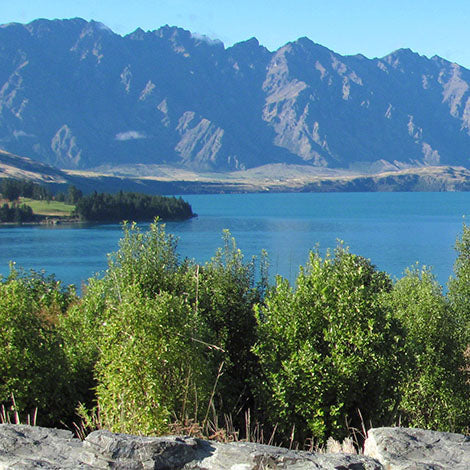Despatch from 5th Jan
Orders over $199
Despatch from 5th Jan
Orders over $199

Nestled in the southern reaches of New Zealand's South Island, Otago and Southland boast breathtaking landscapes characterized by rugged coastlines, rolling hills, and expansive plains. In these diverse and dynamic regions, native plants play a vital role in maintaining ecological balance, supporting biodiversity, and enhancing the beauty of the land.

Whether you're a gardener, conservationist, or homeowner, incorporating native plants into your landscape can contribute to the resilience and sustainability of Otago and Southland. Here are five native plants ideally suited for planting in these regions.
Ribbonwood (Plagianthus regius) - Ribbonwoods are slender, tough fast growing native trees that withstand a wide range of conditions. They are the top recommendation for establishment in windy Otago and Southland where tall shelter from the wind is so necessary in most situations.

Extremely fast to grow and being a strong vertical in the garden or landscape, Ribbonwoods will very quickly transform the look of your garden and quickly provide shelter. They are very beautiful slender compact trees. Ribbonwoods produces masses of flowers that feed and attract bees.

Manuka (Leptospermum scoparium): Renowned for its medicinal properties and distinctive honey, Manuka is a resilient and versatile native shrub found throughout New Zealand, including Otago and Southland. With its small white or pink flowers and aromatic foliage, Manuka adds beauty and biodiversity to coastal dunes, wetlands, and scrubland habitats.

In addition to its cultural significance, Manuka provides habitat for native insects and birds while stabilizing soils and preventing erosion. Planting Manuka supports ecosystem health, enhances biodiversity, and contributes to the sustainable management of natural landscapes.


Coprosma spp.: The Coprosma genus encompasses a diverse group of native shrubs known for their glossy foliage, colorful berries, and adaptability to a range of environmental conditions. In Otago and Southland, species such as Coprosma repens (Taupata) and Coprosma robusta (Karamu) are valued for their ornamental appeal and ecological benefits.

Their rampant growth makes Coprosma ideal plants to establish shelter. Coprosma shrubs provide habitat for birds and masses of berries as food for native birds, attract pollinators, and enhance biodiversity in gardens, coastal areas, and native plantings. Their tolerance to coastal winds and salt spray makes them ideal choices for coastal gardens and revegetation projects along the southern coastlines.

Cabbage Tree (Cordyline australis): No native garden would be complete without this classic kiwi icon. The cabbage tree is not only grand and unique in the way it looks, but also extremely tough and will grow virtually anywhere!

It constantly amazes in that it will grow in very wet ground and survive the toughest dry conditions. The cabbage tree is one of the plants to attract Tui and Bellbird to the garden. At home in alpine or coastal gardens the good ole cabbage is always looking grand!

By embracing native plants in our landscapes, we not only celebrate the unique beauty and biodiversity of Otago and Southland but also contribute to the conservation and restoration of these precious ecosystems. Whether you're creating a coastal garden, restoring a riparian corridor, or beautifying urban green spaces, planting native species like Ribbonwood, Manuka, Harakeke, Coprosma, and Cabbage Tree enriches the land and nurtures the connections between people and nature. As stewards of the land, let us continue to cherish and protect the native flora that sustains us, now and for generations to come.
Leave a comment